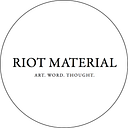The Poetry of Decay: Andrei Tarkovsky’s Newly Remastered Stalker
The year has begun with the Bulletin of Atomic Scientists — those rational soothsayers of the global landscape — moving their infamous Doomsday Clock closer to midnight by thirty seconds. As it stands according to the clock, we are but two minutes away from cataclysm. If we are to approach it in messianic terms, we are living two minutes away from apocalypse. Desolation now haunts our daydreams and nightmares, even if the Doomsday Clock adjustment goes unnoticed by the wider populace still marching to the rhythm of a modern world. But the sense of upcoming cataclysm seeps into our pop consciousness, as personified by the sudden rise of dystopian television, young adult and adult fiction, and the return to political discourse of words associated with futuristic struggle (#resistance).
From Andrei Tarkovsky Stalker
But what would desolation truly look like? Would the collapse of civilization be a scream or a whimper? The Criterion Collection has recently released a beautifully remastered edition of 1979’s Stalker, one of the great cinematic meditations on decay of both nature and the soul, by the great Soviet director Andrei Tarkovsky. It is set in a quietly apocalyptic future, where cloudy skies hover over landscapes of woods and entangled metal, muddy streams and darkened waters. Its power is unnerving but delivered like a whisper. A poet of the lens, Tarkovsky wishes to immerse the viewer in an environment, instead of appealing to the senses with violence or action. Stalker is about personalities inhabiting a destroyed world. How everything was obliterated is left to the viewer to ponder, but knowing our species we can easily imagine for ourselves countless scenarios.
Based on the novel Roadside Picnic, by Arkady and Boris Strugatsky, the film centers on a rugged man known as a “Stalker,” played by Aleksandr Kaidanovsky, who hires himself out to a Writer (Anatoli Solonitsyn) and a Professor (Nikolai Grinko) to trek into a forbidden area known as “the Zone.” In the tradition of classic science fiction, we are only given glimpses via narrative as to how this Zone came to be. It could have been a meteorite crash. Government forces have closed it off, but the Stalker is adept at smuggling the curious across. The aim of the journey is to find a mysterious space called “The Room,” which is said to grant anyone their deepest desires. It is almost a poetic allegory for our insistence on magical thinking even amid catastrophe, or the seeking of magic as deliverance from a world coming apart. If the original novel was more of a standard science fiction journey, Tarkovsky takes the material and transforms it into a serene experience where below the calm there is subdued chaos.
Tarkovsky was one of the great cinematic poets to be produced by the film culture of the Soviet Union. Like Ingmar Bergman he was obsessed by the inner conflicts of humans, and the eternal questions of existence. As with Bergman you watch his films and get the sense of a director attempting to transcend the medium and somehow capture or encapsulate a specific psychological or spiritual struggle in the very frame itself. Of course, because he was an artist of fierce, even spiritual creativity, he was constantly harassed by the bureaucratic censors of the state. Yet he managed to produce films which today are treasured for their visual beauty, astounding sense of detail, and patient tempo. Key among these works is the science fiction epic Solaris, a psychological drama taking place abroad a space station which combines profound human insights with rich imagery. Other notable films include the autobiographical Mirrors and the astounding, searing Andrei Rublev about a 15th century Russian icon painter.
The original film poster for Tarkovsky’s Stalker.
Stalker would be Tarkovsky’s final work to be shot in the USSR before permanently resettling in Western Europe. Fittingly, it has the tone of a lamentation as science fiction. Now remastered by the Criterion Collection, its rich sepias and baroque set ups can be better admired. The first scenes outside of the Zone are sepia-toned, but shot with a sense of light and shadow worthy of Caravaggio. The Stalker lives with his wife and daughter in a barren land, in a home stripped of all comforts. It is a world nearly Medieval in its ambiance. When the journey commences into the Zone, Tarkovsky and cinematographer Alexander Knyazhinsky switch to a palette of greyish color, subdued greens and prominent browns. But leaving the earlier world of the damned and entering a setting of color is not an immediate switch from desolation to utopia. It soon dawns on the viewer that even the Zone is a cold, bare landscape littered with postwar visions. At one point the trio come across a field of abandoned tanks and burned out sniper huts.
Since the Bush years dystopian culture has been prominent in modern cinema …
To read more of this review, go to Riot Material magazine: http://www.riotmaterial.com/the-poetry-of-decay-andrei-tarkovsky-remastered-stalker/
